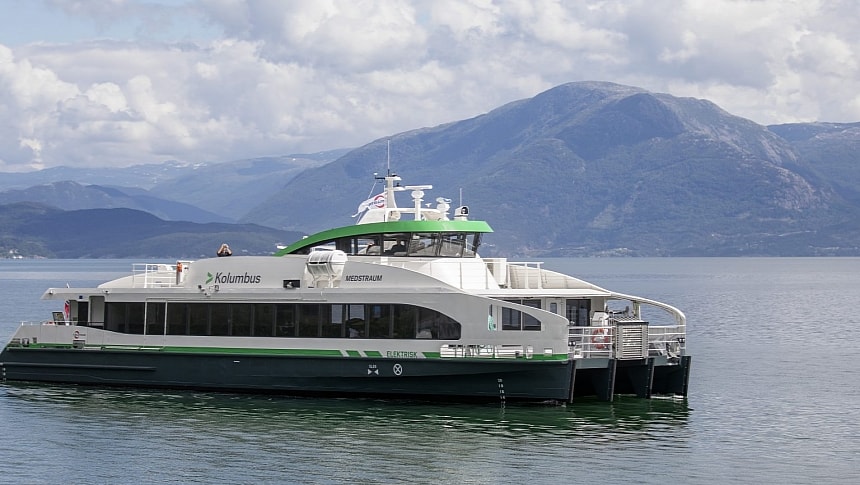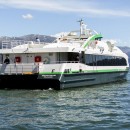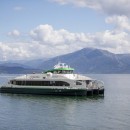Norway is one of the world's pioneers when it comes to a wide range of green solutions for maritime transportation. One of the latest projects is a smaller, local initiative funded by Bergen Municipality, with a focus on infrastructure.
Bergen, the second-largest city in Norway, is one of the places aiming for ambitious low-emission results by the end of the decade. This involves green shipping, which, in turn, is strongly connected to infrastructure. More specifically, low-emission and zero-emission transport alternatives require, among other things, a properly developed charging infrastructure. This is the main target of a new project called "Energy Hubs for Ships," funded by the city's municipality.
The grant was awarded to Maritime CleanTech, which will collaborate with multiple partners in the maritime sector. The Norwegian company is known for its involvement in several top projects, but perhaps the most famous one is the TrAM – Transport Advanced and Modular. This project led to the development of Medstraum, which was introduced as the world's first fully electric ferry.
Medstraum is both a high-speed ferry and a zero-emission vessel. It's officially classified as a high-speed craft, which means that it's able to exceed 23 knots/26 mph/42.5 kph. It's fitted with two electric motors and two Power Lithium battery systems. The Medstraum is designed to cruise at 23 knots for one hour on a single charge. The propulsion system was custom-designed for this ferry, and Wartsila, one of the biggest names in the industry, was in charge of integrating the propulsion, battery, and electric systems onboard.
This pioneering ferry is currently conducting regular passenger trips on a commuter route in Stavanger, Norway. Last year, it became a finalist in the 2023 European Sustainable Energy Awards. The TrAM project was funded by the European Union's Horizon2020 Research and Innovation Program.
Maritime CleanTech was also a part of projects related to wind-powered solutions, offshore charging solutions, and hydrogen production. One of the newest projects this year is related to the design of an ammonia-powered offshore vessel. In other words, the Norwegian company doesn't discriminate when it comes to potential ways of reducing emissions linked to shipping and maritime transportation in general.
All-electric vessels, wind-powered ships, ammonia-fueled boats – there's a place for all of them, and together, they can gradually make green maritime transportation more efficient and more affordable.
The new "Energy Hubs for Ships" initiative will kick off with a series of workshops later this year to better assess the current situation and potential solutions in terms of charging infrastructure. A complete report will then be presented next year during the One Ocean Week.
This is certainly much smaller in scale compared to the game-changing impact of the Medstraum ferry, but it's local, targeted initiatives such as these that help bring about rapid change in the maritime sector, which is notoriously known as one of the most difficult to decarbonize, along with aviation.
The grant was awarded to Maritime CleanTech, which will collaborate with multiple partners in the maritime sector. The Norwegian company is known for its involvement in several top projects, but perhaps the most famous one is the TrAM – Transport Advanced and Modular. This project led to the development of Medstraum, which was introduced as the world's first fully electric ferry.
Medstraum is both a high-speed ferry and a zero-emission vessel. It's officially classified as a high-speed craft, which means that it's able to exceed 23 knots/26 mph/42.5 kph. It's fitted with two electric motors and two Power Lithium battery systems. The Medstraum is designed to cruise at 23 knots for one hour on a single charge. The propulsion system was custom-designed for this ferry, and Wartsila, one of the biggest names in the industry, was in charge of integrating the propulsion, battery, and electric systems onboard.
This pioneering ferry is currently conducting regular passenger trips on a commuter route in Stavanger, Norway. Last year, it became a finalist in the 2023 European Sustainable Energy Awards. The TrAM project was funded by the European Union's Horizon2020 Research and Innovation Program.
Maritime CleanTech was also a part of projects related to wind-powered solutions, offshore charging solutions, and hydrogen production. One of the newest projects this year is related to the design of an ammonia-powered offshore vessel. In other words, the Norwegian company doesn't discriminate when it comes to potential ways of reducing emissions linked to shipping and maritime transportation in general.
All-electric vessels, wind-powered ships, ammonia-fueled boats – there's a place for all of them, and together, they can gradually make green maritime transportation more efficient and more affordable.
The new "Energy Hubs for Ships" initiative will kick off with a series of workshops later this year to better assess the current situation and potential solutions in terms of charging infrastructure. A complete report will then be presented next year during the One Ocean Week.
This is certainly much smaller in scale compared to the game-changing impact of the Medstraum ferry, but it's local, targeted initiatives such as these that help bring about rapid change in the maritime sector, which is notoriously known as one of the most difficult to decarbonize, along with aviation.







